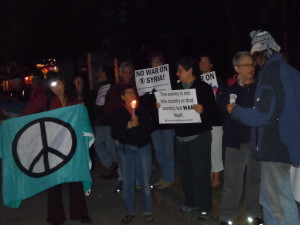Walking with Open Eyes
It’s amazing how much you can see on foot, if you just open your eyes.
I just took an hour-plus walk in Springfield, Massachusetts, from Baystate Medical Center’s Chestnut Building in the North End to the Quadrangle downtown, inbound on Dwight and returning on Chestnut. And I saw all sorts of things that I found fascinating (your mileage may vary—but as I always say, I became a writer because I’m interested in almost everything). Unfortunately, I didn’t have my camera with me, so words will have to do. Here’s some of what I discovered:
- A spectacular blue, green, and pink Victorian house, as fancy as any of San Francisco’s Painted Ladies.
- Not one, but three churches with Star of David motifs. One of them was obviously and one probably built as synagogues, but the third, a massive stone Catholic edifice with a medieval-style tower and an ultra-modern series of metal sculptures on the roof—could only have been built as a church. The star was directly over the main entrance.
- The most graceful windows I’ve ever seen on a residence: the dramatically tall and elegant rounded windows on the Kimball, built in 1911.
- Several blocks that must have once held graceful if run-down Victorians and still has a few—but most have been replaced by a tactless mix of tiny 1950s ranch houses and ugly 1970s or 1980s small duplexes. What a shame!
- The vibrant blue art panels and gold trim on the sides of the Deco-era Massachusetts State Office Building, across from the railroad station—which I never noticed in many trips passing it as I picked up or dropped off someone
- A former school from the late 19th century, built to resemble a castle (now housing for the elderly).
- An enormous strip club decked out to look like a commercial block in New Orleans
- The sprawling ante-bellum-Southern-mansion-style institution that might be part of Mercy Hospital, tall columns and all—sealed off with a chain-link fence and no trespassing signs, seemingly deserted except for one cluster of rooms with lights on. This building was sandwiched between another once-grand institutional building that had burned and been partially demolished—and a modern glass, steel, and aluminum office complex that doesn’t even have its walls yet.
- A beautiful green antique copper clock tower on Main Street, viewed from up the hill on Chestnut near State where I couldn’t tell what building it was attached to.
- Three gilded onion domes atop a Russian Orthodox church.
- A sculpture all by itself on the Chestnut Street side of Museum Quadrangle, obviously part of the Dr. Seuss Sculpture Garden but one I’d never noticed walking around the quad—and another sculpture across from the Mass Mutual Center that looked like broken pottery.
- The Two Mattoon nightclub is now a law office. Mattoon is a beautiful historic block that would be at home in Washington DC’s Georgetown or Brooklyn’s Park Slope. I didn’t walk it today, but crossed the western edge of it.
- Rehab projects everywhere.
- How remarkably few people were out on the streets. In an hour’s walk, I probably saw just a couple of dozen pedestrians, even though I came close to Main Street and it was a beautiful sunny day.
Of course, it’s not enough to notice. We need to think about what these things mean. For instance, I see Springfield as a city that actively reuses its old buildings; the ugly urban renewal project was an exception. More typical are the synagogues that have become evangelical churches, the train station that’s being redeveloped into a modern transportation center and retail base, and the school that now provides living quarters.
The near-absence of pedestrians means something less positive: that the city still has a long way to go before it feels vibrant. I’ve seen pictures of Downtown Springfield in the 1940s, teeming with people. The city needs a more active commercial base with people-centered retail and attention to both visitors and residents, as it once had.
What do you see when you walk around a neighborhood that you usually drive through? Your comments, below, are welcome.

